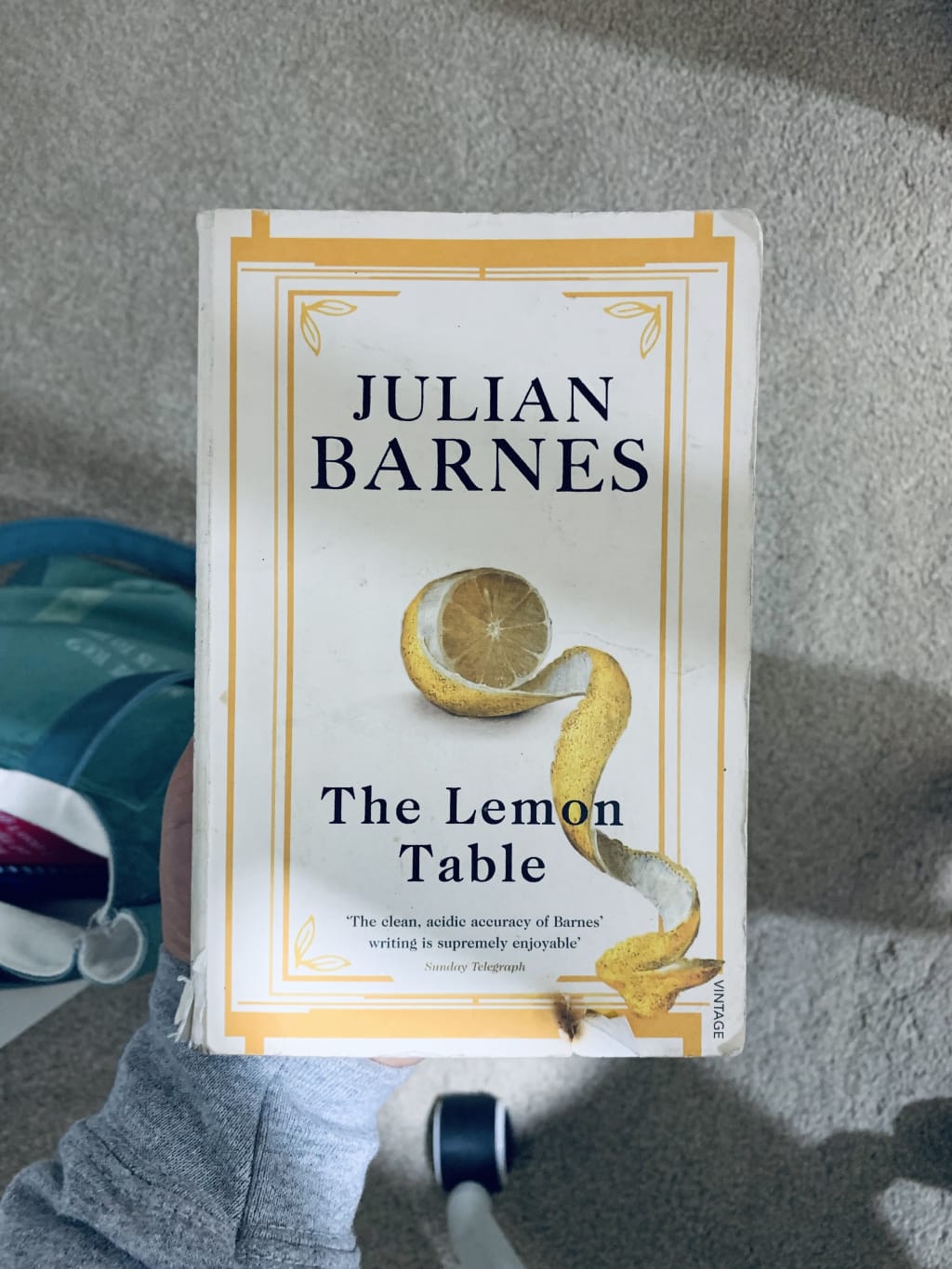Book Review: "The Lemon Table" by Julian Barnes
5/5 - classic Julian Barnes in a new and exciting way...

I've read quite a bit of Julian Barnes in my time. My favourite Julian Barnes book is obviously The Man in the Red Coat because it's all about one of the most fascinating cultural movements in artistic history - the Belle Epoque. The Man in the Red Coat really does showcase the beauty of Julian Barnes' prose, as we also see in some of his other works, notably The Sense of an Ending. But, as I'm reading The Lemon Table I'm starting to discover that maybe I don't know him as a writer as well as I thought. I have been left in a very positive state of confusion by these stories and I couldn't be happier about it. Of course, it's heavily descriptive, it's mundane and not a lot happens at all - it's definitely my kind of book.
The first story of The Lemon Table is called A Short History of Hairdressing and it is about a man who tells his life story to us through various haircuts. Within this, we get an analysis of being young to being old, internalised conversations about life and love and many ideas surrounding confidence, the difference between men and boys etc. It really threw me off because this is not what I expect from Julian Barnes at all. Yet, it was strangely satisfying to read. I love this new discovery I've had of Julian Barnes books.
The next story is called The Story of Mats Israelson and though I enjoyed this story, I didn't understand why it's called what it's called. I know the story is important as a symbol for how men find it difficult to talk to women because he keeps telling the story wrong - but I think it would've definitely been better to call the story something that had to do with the class status of the characters involved in the illicit half-love affair. It would've cleared a lot up. But, the story itself is about a high class lady falling for a workman named Anders. They're both married to other people and the class-based scandal would be horrid for the both of them. It goes through this idea that they cannot be together and that though they try to, they cannot confess their love to each other because it will mean the end of their fairly good marriages. I actually quite enjoyed this one - apart from the title, which didn't fit with the atmosphere of the story. I was admittedly, a little confused about that aspect.
The following story is called The Things You Know and is about two women: Janice and Merrill. It's about their weird friendship in which not a lot is vocalised and how the introspect about each other - mainly Janice about Merrill. I won't say too much of the story because it will give away how it builds up over the course of a few pages. But one thing I will say is that you have to notice what they don't say to each other more than what they do - it will give you a brilliant insight into how these women really feel about one another and yet, leave you thinking what would happened if they voiced what they knew (especially Janice). The ending though, is a satirical masterpiece of an ending and highly symbolic (even for Julian Barnes).
I'm not going to go through every single story because that would give the book away, but the following stories go through a similar pattern of introspection, thought and intense symbolism. For example: in the story Hygiene, the symbol is a bottle of Champagne - which is really important for memory and forming flashbacks. There are several stories in which we see Barnes' extreme symbolism, mundane beauty and real-world intentions and honestly, I am so happy to have read this now as opposed to when I was very young.
In conclusion, I just want you to know - this is a beautiful book in every way with some really amazing stories.
About the Creator
Annie Kapur
200K+ Reads on Vocal.
English Lecturer
🎓Literature & Writing (B.A)
🎓Film & Writing (M.A)
🎓Secondary English Education (PgDipEd) (QTS)
📍Birmingham, UK






Comments
There are no comments for this story
Be the first to respond and start the conversation.